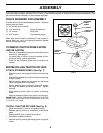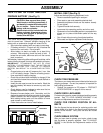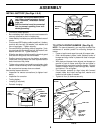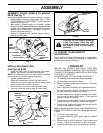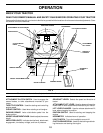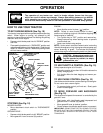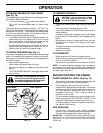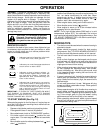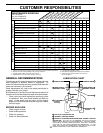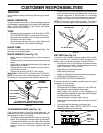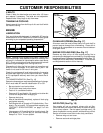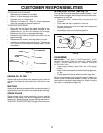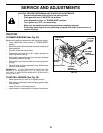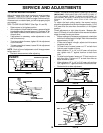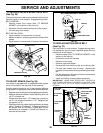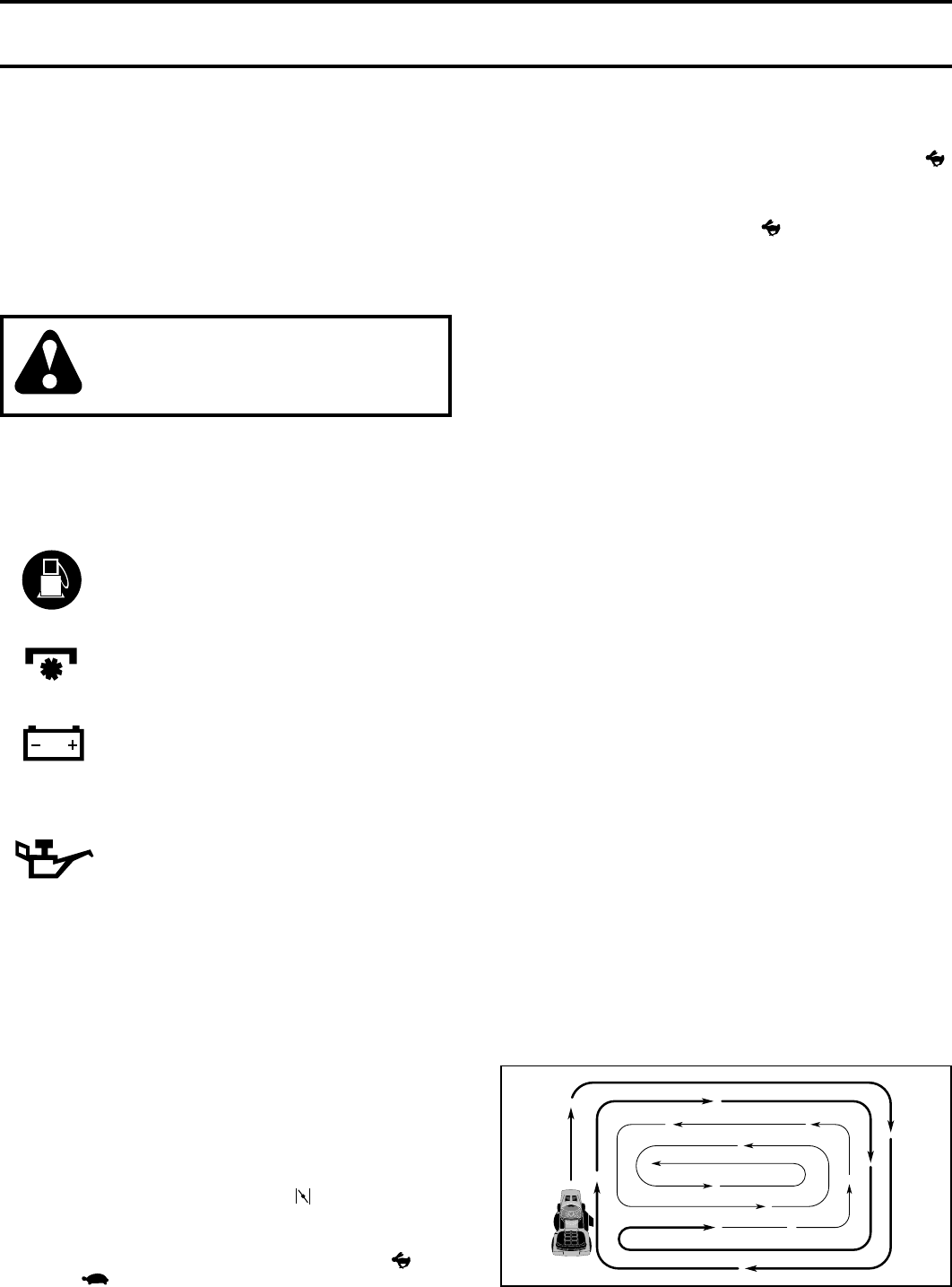
13
OPERATION
• Insert key into ignition and turn key clockwise to “START”
position and release key as soon as engine starts. Do
not run starter continuously for more than fifteen
seconds per minute. If engine does not start after
several attempts, move throttle control to fast ( )
position, wait a few minutes and try again.
• When engine starts, slowly push choke control in.
• Move throttle control to fast ( ) position.
• Allow engine to warm up for a few minutes before
engaging drive or attachments.
NOTE: If at a high altitude (above 3000 feet) or in cold
temperatures (below 32°F), the carburetor fuel mixture
may need to be adjusted for best engine performance. See
“TO ADJUST CARBURETOR” in the Service and Adjust-
ments section of this manual.
MOWING TIPS
• Tire chains cannot be used when the mower housing is
attached to tractor.
• Mower should be properly leveled for best mowing
performance. See "TO LEVEL MOWER HOUSING" in
the Service and Adjustments section of this manual.
• The left hand side of mower should be used for trim-
ming.
• Drive so that clippings are discharged onto the area
that has been cut. Have the cut area to the right of the
machine. This will result in a more even distribution of
clippings and more uniform cutting.
• When mowing large areas, start by turning to the right
so that clippings will discharge away from shrubs,
fences, driveways, etc. After one or two rounds, mow
in the opposite direction making left hand turns until
finished (See Fig. 12).
• If grass is extremely tall, it should be mowed twice to
reduce load and possible fire hazard from dried clip-
pings. Make first cut relatively high; the second to the
desired height.
• Do not mow grass when it is wet. Wet grass will plug
mower and leave undesirable clumps. Allow grass to
dry before mowing.
• Always operate engine at full throttle when mowing to
assure better mowing performance and proper dis-
charge of material. Regulate ground speed by select-
ing a low enough gear to give the mower cutting
performance as well as the quality of cut desired.
• When operating attachments, select a ground speed
that will suit the terrain and give best performance of
the attachment being used.
FIG. 12
WARNING: Experience indicates that alcohol blended
fuels (called gasohol or using ethanol or methanol) can
attract moisture which leads to separation and formation of
acids during storage. Acidic gas can damage the fuel
system of an engine while in storage. To avoid engine
problems, the fuel system should be emptied before stor-
age of 30 days or longer. Drain the gas tank, start the
engine and let it run until the fuel lines and carburetor are
empty. Use fresh fuel next season. See Storage Instruc-
tions for additional information. Never use engine or
carburetor cleaner products in the fuel tank or permanent
damage may occur.
CAUTION: Fill to bottom of gas tank
filler neck. Do not overfill. Wipe off any
spilled oil or fuel. Do not store, spill or
use gasoline near an open flame.
00001
INDICATOR LIGHTS
Located on the dash of your tractor, these lights alert you
to necessary steps required to start your tractor or, while
tractor is running, alerts you to a serious problem which
requires immediate attention.
• Indicates low level of gasoline in fuel tank.
Fill tank with clean, fresh gasoline.
• Indicates you must disengage attachment
clutch control to start tractor.
• Indicates a drop in battery voltage. In-
crease throttle speed and/or check bat-
tery and wiring (Seethe Customer Re-
sponsibilities and Troubleshooting sec-
tions in this manual).
• Indicates low oil pressure in your engine.
Light should come on when engine is not
running and key switch is in "ON" position.
This is a test to be sure light is working
and a reminder to always check oil level
before starting engine.
IMPORTANT: IF CHECK OIL LIGHT COMES ON WHILE
THE ENGINE IS RUNNING, SHUT OFF ENGINE
IMMEDIATELY AND CHECK FOR CAUSE OR SERIOUS
ENGINE DAMAGE WILL OCCUR.
TO START ENGINE (See Fig. 10)
When starting engine for the first time or if engine has run
out of fuel, it will take extra cranking time to move fuel from
the tank to the engine.
• Depress clutch/brake pedal and set parking brake.
• Place gearshift lever in neutral (N) position.
• Move attachment clutch to “DISENGAGED” position.
• Pull choke control out to choke ( ) position for cold
engine start. For warm engine start do not use choke
control.
• Move throttle control to midway between fast ( ) and
slow ( ) positions.
FUEL
DISENGAGE
ATTACHMENT
CHECK
OIL
BATTERY
DISCHARGING




